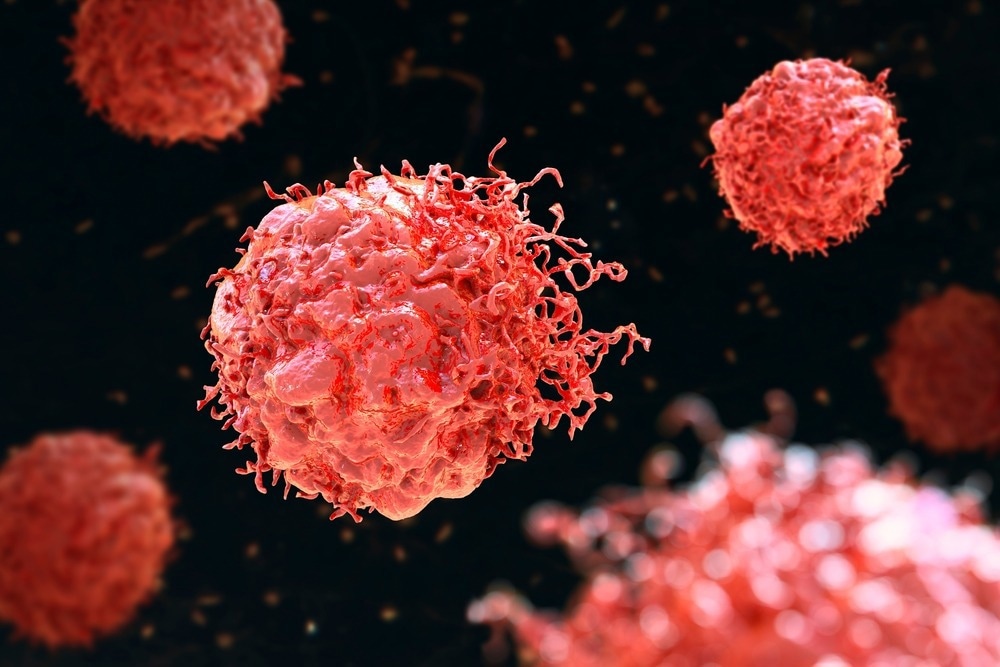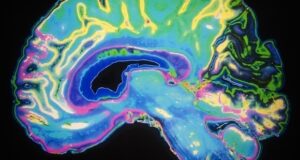Researchers reveal how aging induces iron insufficiency, reducing stem cell function and tumor growth while enhancing ferroptosis resistance

In a recent study published in Nature, a team of researchers investigated the impact of aging on the tumor-initiating potential of alveolar type 2 (AT2) stem cells in the lungs.
Using genetically engineered mice, the researchers demonstrated that aging suppresses tumor formation by altering iron regulation and reducing cellular stemness. These findings suggested new therapeutic avenues for targeting iron homeostasis in cancer prevention and regenerative medicine.
Background
Cancer is predominantly associated with aging, with incidence rates increasing until the eighth decade of life. This trend correlates with the accumulation of mutations in stem and progenitor cells, which are often considered the origin of many cancers. However, aging simultaneously reduces the number and regenerative capacity of these cells, potentially counterbalancing cancer-promoting mutations.
Hallmarks of aging, such as telomere attrition, genomic instability, and epigenetic changes, contribute to stem cell dysfunction. Furthermore, alterations in deoxyribonucleic acid (DNA) methylation, which is a common aging biomarker, may also influence the transformation of stem cells into cancerous cells.
However, the precise link between aging and the decreased tumorigenic potential of stem cells remains unclear. Moreover, the molecular mechanisms underlying these changes have not been fully elucidated. In the context of lung adenocarcinoma, which is a major form of cancer originating from AT2 cells, understanding how aging affects stem cell behavior is essential for advancing cancer prevention strategies and optimizing therapeutic approaches.
About the study
In the present study, the researchers used a genetically engineered murine model to explore how aging influences lung cancer development. In this mouse model, lung adenocarcinoma was induced through targeted mutations in AT2 cells. The activation of the mutations in the AT2 cells was facilitated through adenoviral vectors expressing cyclic recombinase or Cre recombinase under an AT2-specific promoter.
The researchers categorized the mice into young (12 to 16 weeks) and aged (104 to 130 weeks) groups. Tumor progression was monitored at multiple stages, from early hyperplasia to advanced adenocarcinoma. Subsequently, the primary AT2 cells were isolated for in vitro analyses, which included organoid and tumor sphere formation assays to assess self-renewal and transformation capacities.
Additionally, gene expression was analyzed using single-cell ribonucleic acid (RNA) sequencing, while DNA methylation patterns were studied to identify epigenetic changes linked to aging. The researchers further manipulated gene function by targeting specific genes, such as nuclear protein 1 (Nupr1), using clustered regularly interspaced short palindromic repeats (CRISPR)/CRISPR-associated protein 9 (Cas9) and lentiviral delivery systems. This allowed them to investigate the molecular pathways affecting stemness and tumorigenesis.
Iron homeostasis was also studied in aged and young cells by measuring labile iron levels and manipulating iron availability through supplementation or chelation. Additional experiments tested the role of ferroptosis or iron-dependent cell death in AT2 cell transformation.
The regulatory relationship between Nupr1 and its downstream target, lipocalin-2, was explored to understand the mechanisms driving functional iron insufficiency in aged cells. Moreover, enhancers and methylation changes associated with Nupr1 expression were identified using epigenetic analyses and CRISPR interference.
Results
The study found that aging significantly suppresses the tumorigenic potential of lung AT2 stem cells. Aged mice exhibited reduced tumor initiation and progression compared to younger counterparts, which also correlated with a decline in AT2 cell self-renewal and transformation capacity.
Molecular analyses revealed that aged AT2 cells exhibit increased expression of Nupr1, which is a transcription factor that drives functional iron insufficiency. This loss of available iron further reduces cellular stemness and hinders the ability to initiate tumors.
Moreover, the single-cell RNA sequencing indicated that Nupr1 activates lipocalin-2, an iron-sequestering protein, exacerbating iron deficiency in aged cells. However, iron supplementation reversed these effects but also restored tumor-forming capabilities in aged AT2 cells. Conversely, disrupting the Nupr1-lipocalin-2 axis in young cells induced ferroptosis, which is linked to high iron levels, further supporting the age-specific role of this pathway.
The study also demonstrated that aging-associated DNA hypomethylation at Nupr1 enhancer sites upregulated its expression, further linking epigenetic changes to reduced stemness. Moreover, experimental inhibition of DNA methyltransferase in young cells mimicked aging-associated phenotypes and reinforced the role of epigenetics in these processes.
Interestingly, a key finding was the dual role of iron in supporting tumorigenesis in young cells while limiting tumor initiation in aged cells through Nupr1-induced insufficiency. Additionally, aged cells showed resistance to ferroptosis, which suggested a protective mechanism linked to their reduced iron levels. These findings highlighted the complex interplay between aging, stem cell behavior, and iron metabolism in cancer biology.
Conclusions
To summarize, the study demonstrated that aging impaired lung stem cell tumorigenesis by inducing functional iron deficiency through the Nupr1-lipocalin-2 pathway. While aging was found to reduce the stemness and tumor-initiating potential of AT2 cells, it also renders them resistant to ferroptosis. These findings revealed the significance of targeting iron homeostasis in cancer prevention and regenerative medicine. The researchers believe that future studies should explore therapeutic strategies to balance iron regulation for improved health outcomes across age groups.
Journal reference:
- Zhuang, X., Wang, Q., Joost, S., Ferrena, A., Humphreys, D.T., Li X., Blum, M., Krause, K., … & Tammela, T. 2024. Ageing limits stemness and tumorigenesis by reprogramming iron homeostasis. Nature. doi:10.1038/s41586-024-08285-0 https://www.nature.com/articles/s41586-024-08285-0



